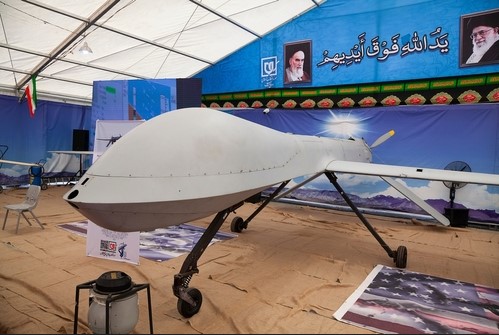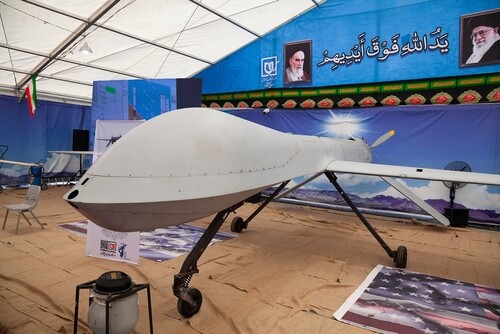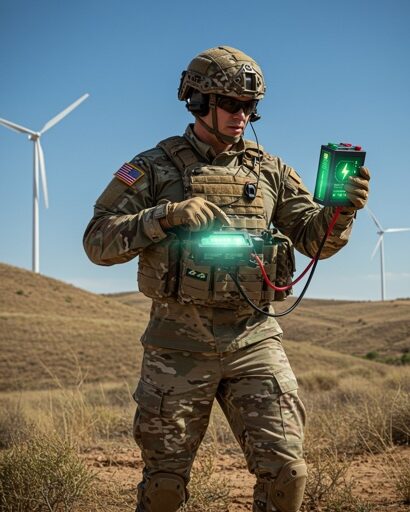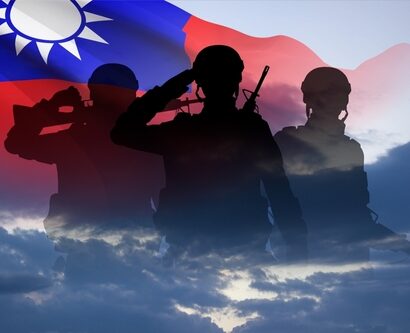Abstract: Drones occupy a central space in warfare as their use represents the intersection of two trends in military technology: the increasing precision of weapons and the rise of robotics. This centrality is particularly evident in the Middle East, where the ownership of surveillance drones and unmanned (combat) aerial vehicles (UAVs/UCAVs) bequeath strategic advantage. This research will, therefore, analyse drone warfare and its larger geopolitical impacts on the Middle East. Particularly, it will focus on the states of Türkiye and Iran due to their remarkable advances in this technology. The relatively accessible, cheap, and effective drones these states possess are changing warfare’s nature. The Middle East has been at the centre of this field, emerging as the leading region in their acquisition and deployment and has become an indigenous developer of these systems.
Problem statement: What impact will the proliferation of inexpensive drone technology have on the geopolitics of the Middle East?
Bottom-line-up-front: Ukraine’s deployment of the Turkish-made TB2 Bayraktar against Russia in the ongoing Russia-Ukraine conflict has demonstrated a cost-effective yet devastating utility. Likewise, Russia has resorted to Shahed-136 to carry out bombing campaigns against Ukrainian cities, targeting Ukraine’s critical infrastructure, such as power stations. Furthermore, the Nagorno-Karabakh conflict is yet another example of how cheap drones can be effective and decisive in conflicts. Such low-cost drones are expected to have a long-term impact on warfare as an effective tool of attrition. In the Middle East, Türkiye and Iran find themselves at the centre of this drone revolution, which has enabled them to project their power effectively in the region and beyond.
So what?: Governments have increasingly used drones against their citizens to safeguard their regimes, examples being Türkiye and Syria. Therefore, there is a need for strict anti-proliferation oversight over the utilisation of this technology, along with the development of equally cost-effective countermeasures to nullify the threats.

Source: shutterstock.com/saeediex
Development of Drone Technology in the Middle East
Factors unique to the Middle East have made drone technology most desirable. The Middle East is abundant with resources but is characterised by instability, protracted attritional conflicts, and proxy wars, such as Syria and Yemen. It has therefore become a battlefield for the manifestation of various geopolitical rivalries. The existence of perpetual security threats, both internal and external, has increased the necessity of UCAVs. Advancements in UCAV technology tend to tip the balance in favour of the offensive capabilities of a state in a conflict.[1] The deployment of drones can favour the attacker due to their low cost, ease of manufacture, and ability to be launched from rugged and logistically challenging locations.[2] There are other advantages, such as precision targeting, remote piloting, and accessibility, which are why UCAVs are increasingly employed by non-state actors and ‘rogue’ states to balance the asymmetry and improve their offensive capacity.
For the longest time, the West tightly controlled the manufacture and sale of UCAVs and their associated technology, with the United States and Israel maintaining an effective duopoly in the field. The Missile Technology Control Regime (MTCR) regulated the export of ballistic missiles and drones through provisions for a ‘strong presumption of denial’, which meant that the U.S. could refuse the procurement of UCAVs unless the procuring state could assure that its usage would not be against the interests of the U.S.[3] The MTCR also required that the procured technology should not be used in human rights violations, which would be detrimental to the reputation of the U.S. Moreover, it demanded a degree of certainty that the weapons would not fall into the hands of terror or extremist groups. Although not legally binding, most member countries limited the sale of UAVs only to certain states.[4] Therefore, even key allies in the Middle East, such as Saudi Arabia and the United Arab Emirates (UAE), have not received UAVs, despite requesting them decades ago.[5] In 2020, the U.S. relaxed its rules to expedite the sales of UAVs to other countries, widening the array of potential buyers.[6]
The MTCR also required that the procured technology should not be used in human rights violations, which would be detrimental to the reputation of the U.S.
As a result of tight anti-proliferation measures, countries in the Middle East could either pursue indigenous technology or procure UAVs from other technologically advanced states such as China. Countries such as Türkiye and the UAE went along the path of indigenous development with programs such as the Bayraktar TB2 and the Yabhon United 40, respectively. However, they faced the challenge of acquiring critical components such as payloads, sensors, flight controls, and software. Other countries like Egypt, Iraq, Jordon, and Saudi Arabia have procured drones from China, such as the Cai Hong-4 (CH-4) and the Wing Loong 2.[7]
Türkiye’s Advances in the Drone Sector
Initially, Türkiye extensively used drones from the United States to combat the Kurdistan Workers Party (PKK). It also used Israeli Heron UAVs for intelligence collection purposes. However, faults in its engine and imaging system meant a significant delay in deployment.[8] Furthermore, Türkiye faced an arms embargo from the United States for its invasion of Cyprus in 1975, which significantly impacted its defence capabilities during the military operation. The embargo enabled Türkiye to recognise the importance of developing an indigenous defence industry. Therefore, Türkiye’s attempts at developing indigenous UCAV technology are an extension of this recognition.
Central to Türkiye’s successful drone indigenisation story is its crown jewel, the Bayraktar TB2, designed by Selçuk Bayraktar at the Turkish technology company Baykar.[9] Deployed against the PKK, it first successfully struck in 2016 in the Hakkari province. It was later used against the Islamic State during Operation Euphrates Shield and Operation Olive Branch in the Syrian Civil War. In 2019, the TB2s were also deployed to Libya to help the Government of National Accord (GNA) maintain its capital in Tripoli. They helped the UN-backed government retake almost all of Western Libya.[10] The TB2s also played a critical role in a decisive Azerbaijani victory against Armenia during the Nagorno-Karabakh conflict in 2020. Other than Ukraine and Azerbaijan, TB2s are operated by Nigeria, Ethiopia, Qatar, Morocco, and Poland.[11]
The TB2s also played a critical role in a decisive Azerbaijani victory against Armenia during the Nagorno-Karabakh conflict in 2020.
Türkiye has mastered the use of TB2s as geopolitical leverage. It signed a defence agreement with Nigeria that included training the country’s pilots in operating TB2s in exchange for access to minerals and liquefied natural gas.[12] In Ethiopia, TB2s were supplied after the government seized several Gülenist schools that allegedly engaged in anti-Erdogan activities.[13] Unlike negotiating with the U.S., obtaining weapons from Türkiye does not involve human rights oversight. Additionally, Türkiye beat Chinese, European and American competition to supply eighteen TB2 drones to Kuwait in a deal worth $370 million.[14] This success officially takes the number of consumer states of the TB2 drone to 28.[15] Notably, Kyrgyzstan is the second country after Türkiye to possess all four types of UCAV variants manufactured by Türkiye.[16] Thus, UCAVs have become an important foreign policy tool for Turkey to project its influence beyond its neighbourhood. It has enabled the state to engage in areas they would otherwise not have, thus resulting in increased military activism at no cost to its civilian populace.[17] The conflicts in Ukraine and Nagorno-Karabakh are examples of the same.
Iran’s Advancements in the Drone Sector
Following the Islamic Revolution in 1979, Iran needed to develop its own technology as it no longer had access to overseas power, asymmetric technologies, and other modern, costly platforms that its adversaries had recourse to. Hence, It began to invest in ballistic missiles to improve their range and precision. Along with this, it began to develop inroads into UCAV technology.[18] Following the Iran-Iraq war, Iran could no longer access the international market, which led it to capitalise on cheaper, locally manufactured technologies and asymmetric tactics. Moreover, in 1984, the U.S. designated Iran as a state-sponsor of terrorism, which further crippled its market access and increased its reliance on indigenous technology. The Mohajer-1, launched in 1985, along with the Ababil-1, were initial developments in Iranian unmanned aerial technology. They were used for surveillance during its war with Iraq.
Iran developed and expanded its portfolio of aerial vehicles by indigenously manufacturing them and their variants. Most of Iran’s current drone fleet is made domestically, while some parts may have been obtained clandestinely or on the grey market.[19] The Iranian drone programme relies heavily on components from the West. Approximately 70 manufacturers from 13 countries and territories, including the Western world and Asia, have supplied drone components for Iran.[20] Eighty-two per cent of the components, which include GPS modules and microchips, are produced by U.S.-based companies.[21], [22] In its military technology, Iran has shown mastery of sanctions-busting. It has shown that it can obtain foreign components, such as engines, for its drones and other military programmes via arms brokers or front companies that source the necessary components.[23]
Regardless of how it sourced its technology, the Iranian state possesses an impressive inventory of drones. Popular models include the Fotros, Hamaseh, Kaman, Karrar, Mian, Meraj, Nazir, Raad, Siraf and Yasir. These drones are used mainly for surveillance and offence. Besides this, Iran has also experimented with drones for search and rescue purposes, as the country is prone to earthquakes. Additionally, drones are a formidable way to block the Strait of Hormuz, a repeated threat Iran has made in light of its crippling sanctions.
Regardless of how it sourced its technology, the Iranian state possesses an impressive inventory of drones. Popular models include the Fotros, Hamaseh, Kaman, Karrar, Mian, Meraj, Nazir, Raad, Siraf and Yasir.
Iran utilises UAVs to compensate for perceived military shortcomings or constraints. Regarding broader regional influence, UAVs enable Iran to provide capabilities to regional proxies while complicating the threat landscape for regional adversaries. Iran has assisted Hezbollah in Lebanon and the Houthis in Yemen with drones. Iran provides its network of regional actors access to these resources, which enables it to influence their behaviour.[24] Russia has heavily depended on Iran for UAVs and direct attack munitions, such as the Shahed-131 and Shahed-136, to employ against Ukraine. This has paved the way for greater defence cooperation between the two countries, with Iran expecting Sukhoi Su-35 multi-role fighters from Russia in return.[25], [26]
Geopolitical Implications of Advancements in UCAV Technology
The increasing use of drones by state and non-state actors poses a quickly escalating international security issue. Armed drones represent a shift towards a mode of military action that minimises the risks and costs to intervening powers and encourages them to participate in conflicts where their vital interests are not at stake.[27] This can be observed in the case of Libya, which became the largest drone war theatre in the world. The UAE and Türkiye have deployed drones against each other’s proxies, with each side trying to destroy its adversary’s drones and command centres, resulting in an escalating conflict.[28] Other examples include targeting Iranian General Qasem Soleimani in 2020 and the attack on Aramco’s oil facilities in Saudi Arabia in 2019. The former is especially significant in that a state attacked a high-level foreign official in the territory of a third state – an indication of the escalation of this threat. Using drone technology for targeted assassinations, as seen in the case of General Soleimani reduces the need for planning and intelligence requirements that would have otherwise been necessary for espionage operations that mandate assets on the ground. The IRGC used proxies such as the Houthis and Iraqi Shiite militia groups such as Kataeb Hezbollah to carry out drone strikes on Saudi Aramco’s oil facilities, giving Tehran some measure of plausible deniability.[29]
With drones becoming increasingly important in modern warfare, Iran and Türkiye look poised to become prominent actors in future conflicts. For years, the Middle East has been strewn with weapons manufactured in the United States or the former Soviet Union. However, regional manufacturers are now beginning to emerge, offering an alternative to the hegemonic military power of the West. Although the United States, China, and Russia continue to dominate global supply lines for advanced weaponry, Iran and Türkiye have demonstrated their importance as manufacturers of combat drones. While Türkiye needed U.S. expertise to create its UCAV/UAV fleet, and Iran still depends on Chinese technology for its UAVs, both nations have become capable of manufacturing drones indigenously.[30]
Although the United States, China, and Russia continue to dominate global supply lines for advanced weaponry, Iran and Türkiye have demonstrated their importance as manufacturers of combat drones.
As is apparent from the Nagorno-Karabakh conflict and the conflict in Ukraine, drones can no longer be viewed as secondary weapons in warfare, utilised only for reconnaissance and surveillance. They have emerged as a vital tool in conflicts worldwide, changing how war is waged. For instance, the TB2 is a reliable, inexpensive platform built with commercial-off-the-shelf (COTS) components, lowering production costs and making maintenance economical for many nations, with an estimated export cost of around $5 million.[31] The drone is comparable to the American MQ-1B, the workhorse UAV in the two-decade-long war on terrorism, which costs around $40 million.[32]
On the other hand, Iranian drones, particularly kamikaze drones, are even less expensive, costing around $20,000, and provide a powerful combination of efficacy and affordability.[33] While their slow speed and inability to carry explosives weighing more than 50 kilogrammes make them easy targets, employing swarms of drones in one raid makes the attack much more dangerous and difficult to counter effectively.[34] This strategy significantly reduces the price per opponent killed for these drones, increasing their combat effectiveness.
Access to drones, even basic ones, can give state and non-state actors an advantage on the battlefield. For instance, Myanmar’s Peoples Defence Force (PDF) deploys civilian drones modified to drop explosives on the military junta forces.[35] Although in a limited way, drones have reduced the gap between conventional and non-conventional air force capabilities. Besides their conventional uses, drones have also been used by IS and Hezbollah as propaganda tools, further inspiring other actors and drastically altering the regional security landscape.[36], [37], [38] Additionally, the decreasing ability to discern between state and non-state entities makes tracking UAVs, their origins, potential uses, and consequences challenging.[39] One must also bear in mind the ambiguity of drones, which makes it challenging to regulate via institutional and legal mechanisms, also factoring in the ease of manufacture of such devices by using off-the-shelf and ready-made components. Some non-state actors operate outside a legally defined institution and have no accountability mandates. This diminishes the transparency surrounding UAV technology and increases the risk of collateral and civilian damage. Therefore, what seems to be the most cost-effective anti-proliferation measure is to increase the development and deployment of non-kinetic anti-drone countermeasures such as radio frequency (RF) jamming, RF hijacking, GPS jamming, spoofing, lasers, and using Electromagnetic Pulse (EMP) generated High-Power Microwave (HPM) systems among others.
What seems to be the most cost-effective anti-proliferation measure is to increase the development and deployment of non-kinetic anti-drone countermeasures.
The rising trajectory of UAV proliferation is inevitable and irreversible. This is especially true in the case of the Middle East, where there is a perpetual need to advance combat technology to eliminate internal threats and deter external ones. Additionally, the dismal economic situation of many of the states in this region may lead to them resorting to cheaper unmanned technologies in light of reduced defence budgets.
Delma Joseph is a Postgraduate student at the Manipal Academy of Higher Education, Karnataka, India. Her interests include the geopolitics of the Middle East, foreign policy, and the Arab-Israeli conflict.
Preetish Kamat is a Postgraduate student at the Manipal Academy of Higher Education, Karnataka, India. His research interests are science, technology and geopolitics, including technology, supply chain security, and critical minerals.
The views contained in this article are the author’s alone and do not represent the views of the Manipal Academy of Higher Education.
[1] Kenneth McKenzie Jr., “Striking Back: Iran and the Rise of Asymmetric Drone Warfare in the Middle East,” https://www.washingtoninstitute.org/Policy-Analysis/Striking-Back-Iran-and-Rise-Asymmetric-Drone-Warfare-Middle-East, Washington D.C., United States of America: The Washington Institute for Near East Policy, February 2023, https://www.washingtoninstitute.org/policy-analysis/striking-back-iran-and-rise-asymmetric-drone-warfare-middle-east.
[2] Idem.
[3] F. F. Milan and A. Bassiri Tabrizi, Armed, unmanned, and in high demand: the drivers behind combat drones proliferation in the Middle East, Small Wars & Insurgencies, 31(4), 2020, 731.
[4] Cholpon Orozobekova and Marc Finaud, “Regulating and Limiting the Proliferation of Armed Drones: Norms and Challenges,” (Geneva Paper. The Geneva Centre for Security Policy, 2020).
[5] Milan and Tabrizi, 2020, 732.
[6] Daryl G. Kimball, U.S. Reinterprets MTCR Rules, September 2020, https://www.armscontrol.org/act/2020-09/news/us-reinterprets-mtcr-rules.
[7] Hiddai Segev and Ofek Reimer, “Not a Flood, but a Rising Current: Chinese Weapons Sales to the Middle East,” Israel-China Relations: Opportunities and Challenges (TelAviv: Institute for National Security Studies) (2019): 79-100.
[8] Umar Farooq, The Second Drone Age: How Turkey Defied the US and Became a Killer Drone Power, May 14, 2019, https://theintercept.com/2019/05/14/turkey-second-drone-age/.
[9] Ash Rossiter and Brendon J. Cannon, “Turkey’s rise as a drone power: trial by fire,” Defense & Security Analysis 38, no. 2 (2022): 210-229.
[10] Idem.
[11] Stephen Witt, “The Turkish Drone That Changed the Nature of Warfare,” The New Yorker, May 09, 2022, https://www.newyorker.com/magazine/2022/05/16/the-turkish-drone-that-changed-the-nature-of-warfare.
[12] Idem.
[13] Idem.
[14] Ragip Soylu, “Kuwait Purchases Turkish-Made Bayraktar TB2 Drones,” Middle East Eye, n.d. https://www.middleeasteye.net/news/kuwait-turkey-bayraktar-tb2-drones-purchase.
[15] Idem.
[16] Daily Sabah, “Kyrgyzstan Says It Purchased 4 Different Combat Drones from Türkiye,” Daily Sabah, January 17, 2023, https://www.dailysabah.com/business/defense/yrgyzstan-says-it-purchased-4-different-combat-drones-from-turkiye.
[17] Martins, Bruno Oliveira, Pinar Tank and Beste İşleyen, “Turkish Drones as a Foreign Policy Tool.”
[18] Michael Rubin, A short history of the Iranian drone program, American Enterprise Institute, 2020.
[19] Idem.
[20] Conflict Armament Research, “Dissecting Iranian Drones Employed by Russia in Ukraine,” ArcGIS StoryMaps, November 28, 2022, https://storymaps.arcgis.com/stories/7a394153c87947d8a602c3927609f572.
[21] Snehesh Alex Philip, “Why Iran’s Drone Programme Is a ‘Triumph’ – Harsh Sanctions, Western Components & Simple Designs,” ThePrint, January 26, 2023, https://theprint.in/defence/why-irans-drone-programme-is-a-triumph-harsh-sanctions-western-components-simple-designs/1326076/.
[22] The Iran Primer, “Explainer: American Parts in Iranian Drones,” March 01, 2023, https://iranprimer.usip.org/blog/2023/mar/01/explainer-american-parts-iranian-drones.
[23] Adam Rawnsley, “Like It or Not, Iran Is a Drone Power – War Is Boring,” Medium, May 24, 2018, https://medium.com/war-is-boring/like-it-or-not-iran-is-a-drone-power-e9899c954a3f.
[24] Douglas Barrie, “Overview: Iran’s Drone Fleet,” March 01, 2023.
[25] Idem.
[26] The Irish Times, “Russia Turns to Cheap but Sophisticated Iranian Drones to Pummel Ukraine,” October 18, 2022, https://www.irishtimes.com/world/middle-east/2022/10/18/russia-turns-to-cheap-but-sophisticated-iranian-drones-to-pummel-ukraine/.
[27] Shane Mason, “Drones, Deniability, and Disinformation: Warfare in Libya and the New International Disorder – War on the Rocks,” War on the Rocks, March 3, 2020, https://warontherocks.com/2020/03/drones-deniability-and-disinformation-warfare-in-libya-and-the-new-international-disorder/.
[28] MEO, “Emirati, Turkish Drones Battle over Libya | MEO,” n.d. https://middle-east-online.com/en/emirati-turkish-drones-battle-over-libya.
[29] Oubai Shahbandar, “Why Drone War by Proxy Is Iran’s Favored Form of Asymmetric Warfare,” Arab News, October 20, 2021, https://www.arabnews.com/node/1951921/amp.
[30] Mustafa Abu Sneineh, “Middle East Turns Arms Exporter as Combat Drones Take Flight in Europe,” Middle East Eye, November 01, 2022, https://www.middleeasteye.net/news/middle-east-arms-exporter-combat-drones-take-flight-europe.
[31] Mark Massa, “The TB2: The Value of a Cheap and ‘Good Enough’ Drone,” Atlantic Council, September 01, 2022, https://www.atlanticcouncil.org/content-series/airpower-after-ukraine/the-tb2-the-value-of-a-cheap-and-good-enough-drone/.
[32] Military Factory, “General Atomics MQ-1 Predator (Predator A),” n.d., https://www.militaryfactory.com/aircraft/detail.php?aircraft_id=46.
[33] Omar Alradad, “The Regional Impact of Iran’s Drones in Ukraine,” The Washington Institute, December 07, 2022, https://www.washingtoninstitute.org/policy-analysis/regional-impact-irans-drones-ukraine.
[34] Idem.
[35] Burmese, RFA, “Drones Level Playing Field for Myanmar’s Armed Opposition against Powerful Military,” Radio Free Asia, September 26, 2022, https://www.rfa.org/english/news/myanmar/drones-09242022111201.html.
[36] Emil Archambault and Yannick Veilleux-Lepage, “Drone Imagery in Islamic State Propaganda: Flying like a State,” International Affairs 96, no. 4 (July 1, 2020): 955–73, https://doi.org/10.1093/ia/iiaa014.
[37] Kyle, “The Use of Drones by Terrorist Organizations: A Constant Challenge to Counter-Terrorism Policies,” European Eye on Radicalization, October 14, 2022, https://eeradicalization.com/the-use-of-drones-by-terrorist-organizations/.
[38] Amir Bar Shalom, “Hezbollah’s Drones Carried a Message to Israeli Gas Rig, Not Weapons,” Times of Israel, July 3, 2022, https://www.timesofisrael.com/hezbollahs-drones-carried-a-message-to-israeli-gas-rig-not-weapons/.
[39] Federico Borsari, “The Middle East ‘s Game of Drones: The race to lethal UAVs and its implications for the region’s security landscape,” ISPI Analysis.






